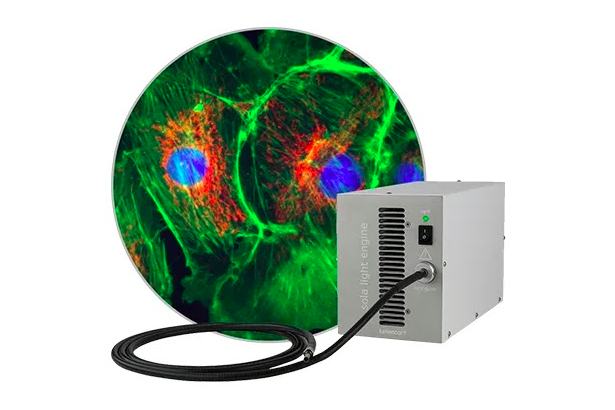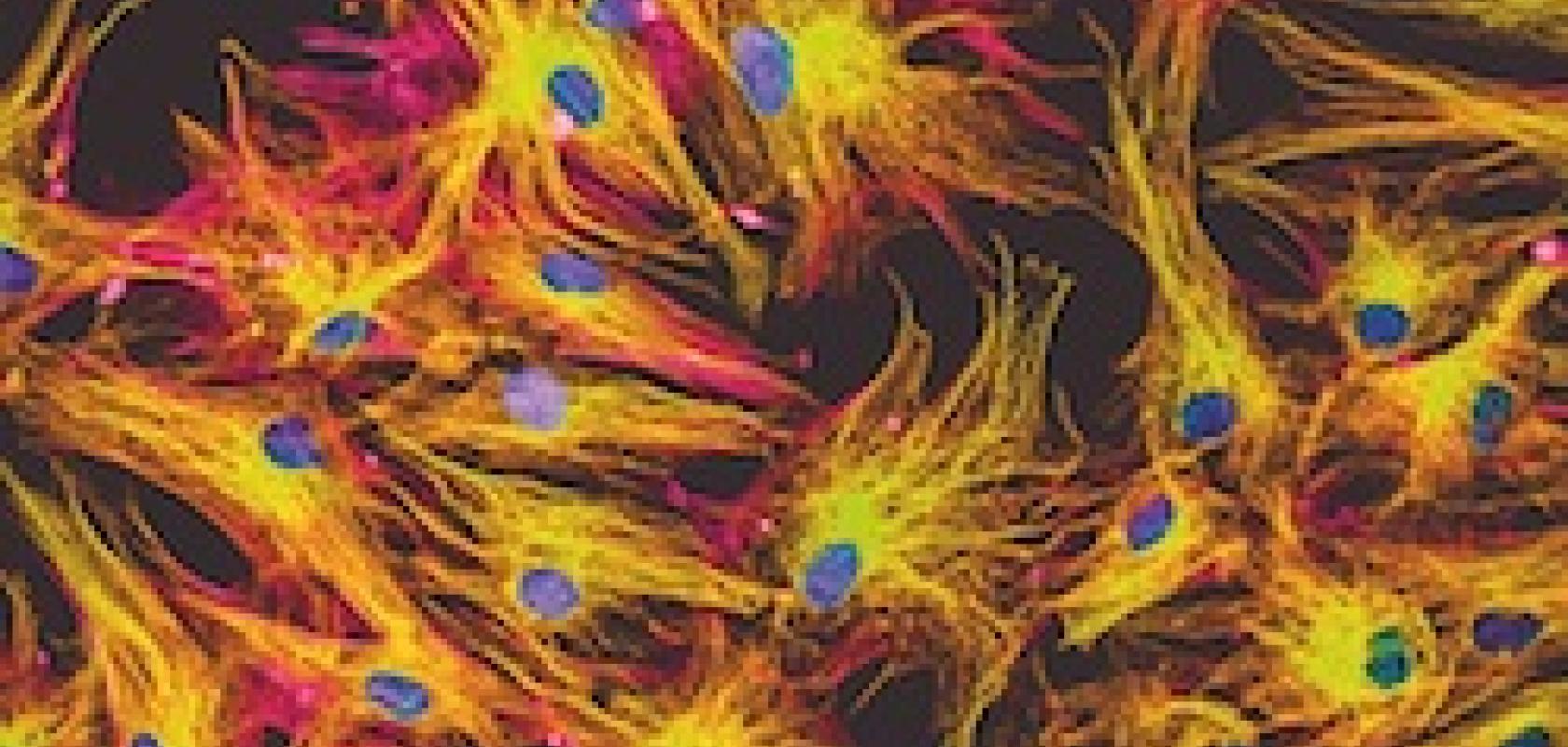David Stuart explores the transition from traditional arc lamps to solid state light sources in microscopy
Solid state light engines have been an important development in fluorescence microscopy, providing a steady, reliable, and environmentally-friendly alternative to the traditional arc lamp. However, despite the advantages, sub-optimal solutions often continue to be used, both out of habit and due to budgetary concerns.
A new whitepaper from Lumencor puts across a strong economic case for the adoption of solid state light engines, which not only offer better cost efficiency over the long term, but improve the way biologists can carry out research.
In the past 30 years fluorescence microscopy has become a pre-eminent technique in researching cell biology, neuroscience and genomics. It’s a very sensitive technique that enables the visualisation of individual cells and cell components, with a camera and light source as two peripherals that sit on either side of the microscope.
In the early 90s, fluorescence microscopy was transformed by the introduction of digital imaging, and according to Dr Iain Johnson, director of technical support at Lumencor, we’re now in a similar phase with the development and adoption of light sources.
‘The state of the art in 1990,’ he said, ‘would be a mercury light source and taking images with a 35mm film camera, and then digital cameras came and quickly took over because of the compelling advantages – primarily being able to process the data on a computer.
‘Film went away in microscopy about as fast as it did in the consumer camera market. Now the same thing is happening, and will happen, on the light source side.’
The adoption of technology is driven by the needs of the adoptees, and biologists using fluorescence microscopy want to get more resolution to be able to see more structural features in the cells, and look at multiple cells simultaneously. As Johnson explained, this requires faster imaging, and stable lighting: ‘Scanning a whole piece of tissue involves taking hundreds and thousands of images, and stitching them all together to make a montage. All the way through that scanning process the light source has got to be stable, otherwise you get errors in frame registration. Bigger pieces of tissue require time to do the scan, so researchers want to go faster, so they can scan across a bigger piece of tissue in the same amount of time,’ he said.
‘Biology moves fast… In our world you think a second is not a long time, but in the lifetime of a cell a second is a very long time,’ continued Johnson. ‘If you can only take one image every second then you may actually miss the entire process that you are trying to study because it’s been and gone. Researchers don’t just want to take a before and after picture, they want to take a whole bunch of during pictures.’
Johnson further explained that the increased stability of solid state sources compared to arc lamps improve the reliability of the results obtained by the microscope. If a light source is flickering, for example, the researcher will not know whether what they are observing is an artefact of the light source, or a biological phenomenon. ‘It’s essential that the researchers are only looking at the biology, and everything else that is used to make the observation – including the light source, camera, microscope and computer software – is not contributing to any variability in the image,’ he said.
Solid state engines not only provide the necessary stability, but also much greater control over the speed and type of light that is being emitted. Damage to the cell sample through photobleaching and phototoxicity are significant challenges in fluorescence microscopy, and steady state light engines both increase the speed with which the light source is turned on and off, and the spectral output.

Lumencor’s Sola SM light engine
‘A solid state light source is a completely electronically-controlled device, whereas with an arc lamp you have to use a mechanical shutter to block the beam and open it up,’ said Johnson. ‘That mechanical shutter is quite slow – it’s a tenth of a second to open again – you wouldn’t think intuitively a tenth of a second is a long time, but when you are studying dynamics in a cell, it is.’
Another benefit of solid state light engines is that they are much more customisable than arc lamps. ‘In many cases the fluorescence microscope in research is a general-use tool, and the researcher will need the broadest light source to be able to cover a whole number of different applications that they’re trying to execute. But in other areas, such as diagnostic testing, for example, a complete menu of options isn’t required, because in a diagnostic situation they’re doing the same test every day. With solid-state technology you can add and subtract colour content into the light source, and engineering control features very readily.’
Force of habit
Despite the undoubted advantages, and researchers’ interest in replacing arc lamps with solid state light engines, there are still upfront capital costs, and it is often simpler to continue doing things the way they have always been done. However, solid state solutions offer the best cost efficiency in the long term, explained Johnson: ‘Arc lamps require consumables to keep them running – the main one being the bulbs, with one microscope potentially using 10 bulbs a year. But once somebody’s got the logistics in place, and knows where to buy the replacement bulbs and how to install them, they tend to not regard it as an expense any more.
‘When you start adding that up it can amount to a couple of thousand dollars a year, and you go through two or three years of doing that, and you’ve spent the amount it requires to buy a solid state light engine which uses no bulbs at all,’ he said.
The economic case for solid state light engines is set out in more detail in Lumencor’s whitepaper on an analysis of the service histories of SOLA SM light engines: Light engine operating lifetime: robustness, reliability, longevity in maintenance-free lighting. The SOLA SM not only has a wide installation base, but its use most closely matches that of an arc lamp. While the operational lifetime of 10,000 to 20,000 hours are frequently cited, these estimates are based on performance for single LEDs, rather than being representative of sophisticated light engines in typical working environments. The whitepaper shows a projected service lifetime of 15 years for the SOLA SM light engine, with the light engines expected to have recouped their cost after just 2.3 years.
Johnson explained: ‘People don’t realise all the money they are spending, which is part of the reason for writing this whitepaper: to get people to think about how much they are actually spending on these consumables,’ said Johnson.
‘The demand for the advantages of solid state light engines is there, researchers realise the benefits of switching – it just really remains to get people to make the switch, but because of an ingrained habit they don’t do it.’
There has always been a strong scientific case for solid state light engines, and a strong environmental case with the avoidance of contaminants such as mercury, and in Lumencor’s white paper the strong economic case has also been made, helping researchers to justify getting the tools they need.
Download Lumencor's whitepaper:


